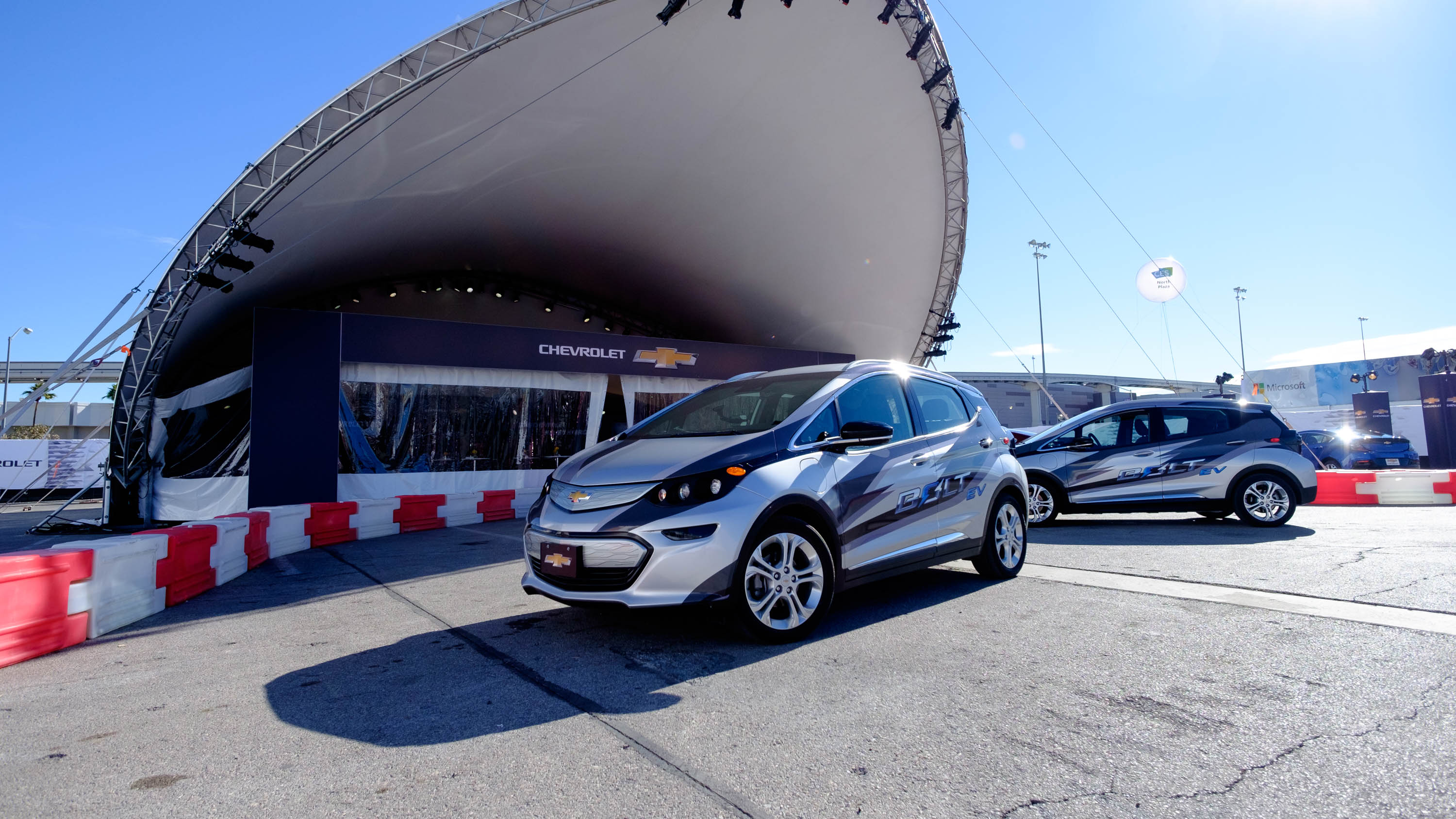Early Verdict
The Chevy Bolt is the first EV that combines a solid infotainment system, driver assist features and up to 200 miles of range into a versatile hatchback for under $40,000, and I want one.
Pros
- +
200 miles of electric range
- +
Android Auto & Apple CarPlay
- +
Rear camera mirror
- +
10.2-inch infotainment display
Cons
- -
360-degree camera quality
- -
Lack of adaptive cruise control
Why you can trust TechRadar
It's been over a decade since General Motors sent most of its first production electric vehicle (EV), the GM EV1, to the crushers and cancelled its EV program.
A lot has changed since the GM EV1 was around, especially in the area of battery technology. While the GM EV1 launched with lead-acid batteries and later updated with nickel-metal hydride, lithium-ion battery technology has improved drastically to become a clean energy source for cars.
After producing the Volt plug-in electric hybrid (PHEV) and the limited-availability Spark EV, Chevrolet finally has an all-electric car for the masses. The company debuted the production Chevy Bolt to great fanfare during a keynote from CEO Mary Barra at CES 2016.
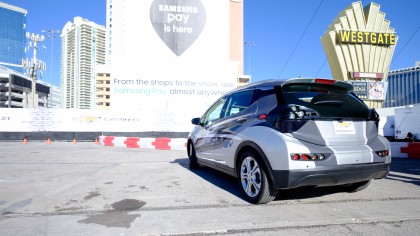
Chevy let techradar take out a preproduction Bolt for a couple laps around its autocross course at CES 2016 for an early hands-on review of the car. They're remaining tight-lipped about the power train details until the North American International Auto Show in Detroit, but the preproduction mule was drivable.
The Bolt shares the familiar face of the rest of Chevy's lineup, which is a good thing. It's recognizable as a Chevy but doesn't look goofy like the Nissan Leaf. Bolt EV badges are the only distinguishable marks that identify the car as all-electric, otherwise you could easily mistake it for a Chevy Spark.
I like how the car looks a lot, because it looks like a practical compact hatchback. It doesn't push any design boundaries – it's what I expect a practical car to look like. There's no rule that says electric cars have to have radical designs and features such as the falcon doors on the Tesla Model X or the Batmobile styling of the Faraday Future FFZERO1.
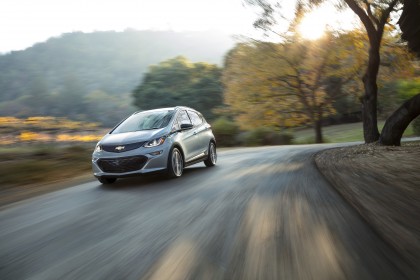
The preproduction Bolt I drove didn't have the headlights or taillights that will be on the production car, but it makes the car look like a hot-hatch. It didn't have a production interior and had everything covered up, so I can't judge the material quality or overall comfort.
Infotainment system
Despite the preproduction interior, the 8-inch LCD gauge cluster had sharp text and clean graphics. I'm glad Chevy used the LCD display to create a user interface that's modern and not just replicating analog gauges, digitally. It displays useful vehicle information such as estimated range, energy consumption and regenerative braking, but also ties into the infotainment system to display music data and turn-by-turn navigation directions. The speedometer is a large digital read out that's hard to miss while driving.
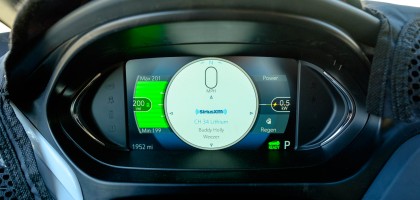
Chevy's MyLink 10.2-inch infotainment display occupies a large part of the center stack and looks like a tablet. Navigating the user interface was a breeze thanks to a responsive capacitive touch display with simple menus. It's completely customizable and reminds me of Windows 10 live tiles. There's a 2 x 8 grid that lets you select what you want displayed, including energy-consumption, music data and connected smartphone.
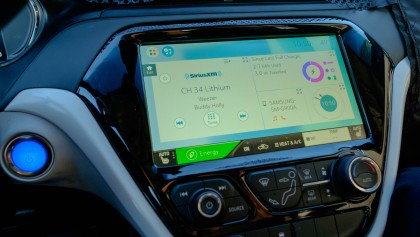
The cherry on top of the MyLink 10.2-inch infotainment system is support for Android Auto and Apple CarPlay, which I didn't get to play with, unfortunately. I don't foresee any compatibility issues as the Bolt isn't the first GM car to tout support for the two smartphone connectivity features.
Driver assists
The Bolt will have offer forward pedestrian alert, forward collision alert, blind spot monitor and rear cross path detection, but the car I drove did not have those options. It did have the 360-degree camera and rear camera mirror though.
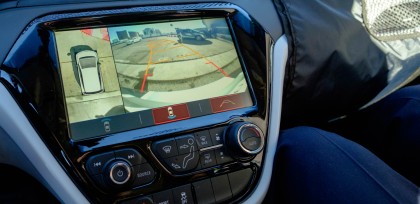
Chevy's 360-degree camera combines the feed of four cameras to create a bird's eye view of the car. I've yet to use a 360-degree camera in a car that I didn't love, and the Bolt is no different. However, the 10.2-inch infotainment display does make the low quality cameras look worse than smaller screens, since it's trying to scale the image to fit.
Nevertheless, I was able to see the lane markers and surroundings, which is still very useful information when backing up or parking the car. It would have been nice if Chevy used higher-resolution cameras, but I won't hold it against them because higher quality cameras are typically only available in luxury vehicles.
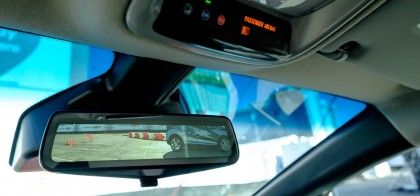
Chevy's rear camera mirror technology provides a live video feed to the rear view mirror. The camera quality is lower than what you'd see with a regular mirror. Fortunately, you can toggle between the video feed and a regular mirror.
Despite the camera quality, it's a weird to see a rear view of the car without headrests or the pillars. I can see the safety potential for this, but it will take time to get used to, which did not happen during my brief drive.
Driving the Bolt
Chevy let me drive around the autocross course for three laps to get an early impression of the car and I walked away extremely impressed. The instant torque from the electric motor gives the car a lot of low end grunt to throw you back into the seat.
Steering response was precise, but a little on the heavy side. The Bolt suspension felt very athletic and the car isn't nose-heavy like the Nissan Leaf. The whole time I drove the Bolt, I kept thinking how much fun the car would be to use as a weekend autocross car, especially with the instant torque.
Living with it
I couldn't really perform my usual car seat installation with Diono or trunk space tests since I'm in Las Vegas, Nev., but the car felt very spacious. A quick visual inspection leads me to believe the Bolt should fit three car seats because it's very wide. The seat belt buckles were also placed quite low and should safely secure a Diono Radian RXT in front and rear-facing positions.
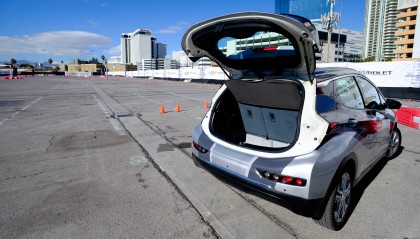
The cargo area is what you'd expect from a sub-compact car, its small. However, the trunk is deep and you should be able to bring enough luggage for four for a weekend getaway, if you pack lightly.
Early verdict
Chevy's Bolt is an impressive little car that brings affordable EV's up to date with spacious passenger space, a modern interior, Android Auto and Apple Car Play ready infotainment system and driver assist technologies, which addresses our complaints with the 2016 Nissan Leaf. If Chevy can keep its promise of 200-miles of range on a single charge and deliver the car by the end of the year, I may have to trade in my Mazda 5 and my wife's Nissan Leaf to go down to a single electrified car.
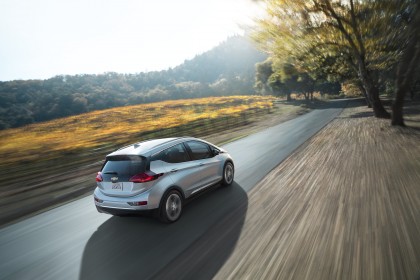
The 200-miles of range is enough for me to drive down to Portland, Ore. from Graham, Wash. (120 miles each way) without stopping to charge along the way, and still have enough range to drive around town. A 30-minute stop at a quick charger would get me enough range to make it home too. I would also never have to charge in public either, as the range is plenty enough for my furthest trips.
However, my biggest fear for the Bolt is the cheap gas prices that may deter buyers going electric. The car still carries a premium price for the electric powertrain and gas for under $3 per gallon doesn't help its case. But for those that want to take a leap of faith and break free of gas, the Bolt should be a winner.
What is a hands on review?
Hands on reviews' are a journalist's first impressions of a piece of kit based on spending some time with it. It may be just a few moments, or a few hours. The important thing is we have been able to play with it ourselves and can give you some sense of what it's like to use, even if it's only an embryonic view. For more information, see TechRadar's Reviews Guarantee.
